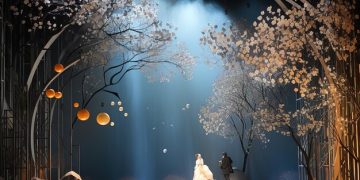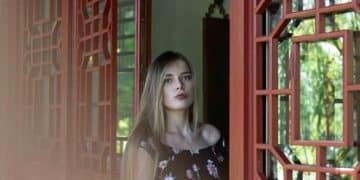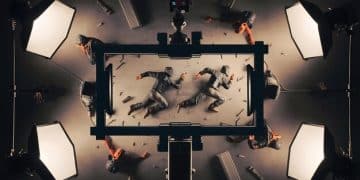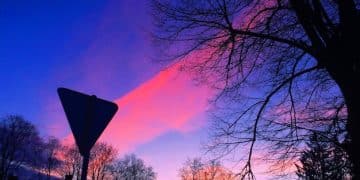K-Drama Cinematography: Visual Storytelling in 3 Award-Winning Series
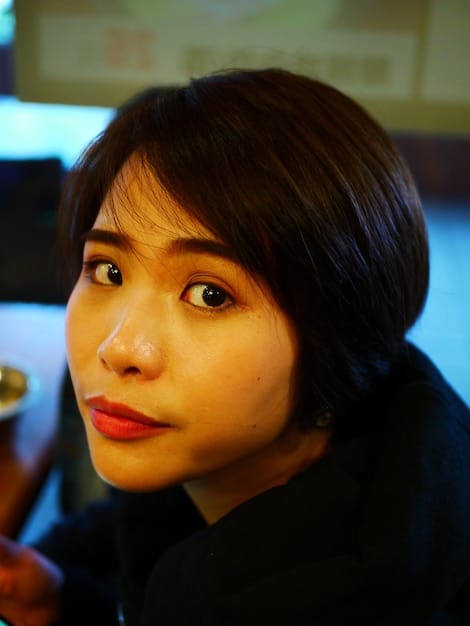
K-Drama cinematography intricately weaves visual storytelling into narratives, elevating emotional depth and narrative impact through meticulous composition, lighting, and color, as exemplified by award-winning series that set industry benchmarks for their artistic excellence and immersive viewing experiences.
Delve into the captivating world of K-dramas, where visual artistry often takes center stage, creating immersive experiences for viewers. This article explores K-Drama cinematography: analyzing the visual storytelling techniques used in 3 award-winning series, uncovering how these productions masterfully use their visual language to enhance emotional resonance and narrative depth.
The Art of K-Drama Visual Storytelling
K-dramas have transcended their regional origins to become a global phenomenon, captivating audiences not only with compelling narratives and complex characters but also with their exceptional visual presentation. The cinematography in these series often acts as an unspoken narrator, guiding viewers through intricate emotional landscapes and pivotal plot points.
This commitment to visual excellence is a cornerstone of K-drama production. Filmmakers meticulously craft each frame, utilizing a range of techniques to evoke specific feelings and underscore thematic elements. It’s a deliberate process where every shot is purposeful, contributing to a rich, layered viewing experience that distinguishes K-dramas from many other television productions worldwide.
Beyond the Script: When Images Speak Volumes
Visual storytelling in K-dramas extends far beyond simply capturing the action. It involves a nuanced interplay of elements that communicate mood, character psychology, and narrative progression without relying solely on dialogue. Often, a single shot can convey more profound meaning than several lines of exposition, making the visual language critical to appreciating these series.
The dedication to this craft ensures that scenes are not just aesthetically pleasing but also profoundly impactful. Whether it’s a subtle change in lighting to reflect a character’s internal conflict or a sprawling wide shot to emphasize loneliness, the visual choices are always aligned with the narrative’s core.
- Emotional Depth: Cinematography often amplifies emotional beats.
- Character Insights: Visual details reveal subtle aspects of personality.
- Thematic Reinforcement: Recurring visual motifs strengthen underlying themes.
- Immersive Experience: High-quality visuals draw viewers deeper into the story world.
Understanding these techniques enhances appreciation for the artistry behind K-dramas. It transforms passive viewing into an active engagement with the visual text, allowing audiences to decipher deeper layers of meaning embedded within the meticulously crafted frames.
Analyzing “Crash Landing on You”: A Masterclass in Visual Contrast
“Crash Landing on You” (CLOY) captured hearts globally with its unique premise and undeniable chemistry between its leads. Beyond the romance, the series stood out for its masterful use of visual contrast, effectively portraying the stark differences and surprising similarities between North and South Korea, as well as the characters’ internal struggles.
The cinematography often juxtaposed the grim realism of North Korea with the vibrant, often glamorous world of South Korea. This was achieved through deliberate choices in color grading, lighting, and set design. The visual storytelling here was not just about showing two different worlds but about highlighting the emotional and socio-political chasm separating them, and the bridge built by love.
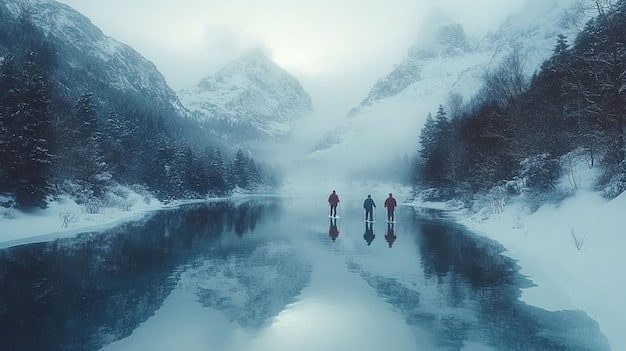
Color Palettes and Lighting: Defining Two Worlds
In CLOY, North Korea was frequently depicted with muted, desaturated tones, often bathed in natural, sometimes harsh, lighting. This visual choice underscored the scarcity, strictness, and often melancholic atmosphere of the regime. Conversely, South Korea was portrayed with richer, more diverse color palettes and often brighter, more flattering lighting, symbolizing freedom, prosperity, and modernity.
These visual cues were not always overt; sometimes, the transition was subtle, like a sudden shift to warmer tones during intimate moments in North Korea, suggesting comfort and hope found within challenging circumstances. This dynamic use of color and light played a significant role in conveying emotional shifts and character developments, making the cinematography an integral part of the narrative.
- North Korea: Desaturated colors, natural/harsh lighting, conveying austerity.
- South Korea: Vibrant colors, bright/flattering lighting, symbolizing modernity.
- Emotional Shifts: Subtle color changes reflecting character mood.
- Symbolic Contrast: Visuals highlighting socio-political differences.
The directors and cinematographers of CLOY utilized these visual elements not just as background but as active participants in the storytelling, allowing viewers to subconsciously absorb the narratives of separation and connection. This technique elevated the series from a simple romantic drama to a culturally insightful piece of art.
Decoding “Vincenzo”: Stylish Action and Character Depth
“Vincenzo” brought a unique blend of dark comedy, intense action, and morally ambiguous characters to the forefront, all wrapped in a visually stunning package. The cinematography played a crucial role in establishing the series’ distinct tone, often mixing sleek, modern aesthetics with classic, almost operatic grandeur.
The series’ visual language was sharp and deliberate, mirroring the protagonist Vincenzo Cassano’s meticulous and ruthless nature. Every setting, from the opulent Geumga Plaza to the lavish villainous headquarters, was framed to enhance the narrative’s irony and dramatic tension. It was a world where style was a weapon, and appearance was everything, perfectly captured through the lens.
Architectural Framing and Symmetrical Composition
“Vincenzo” frequently employed architectural framing, using doorways, windows, and structural elements to frame characters within the scene. This technique not only added visual interest but also emphasized power dynamics, isolation, or entrapment, depending on the context. Symmetrical compositions were also a hallmark, reflecting Vincenzo’s desire for order and control, even amidst chaos.
These visual decisions created a sense of controlled artistry, where even the most violent scenes were aesthetically pleasing. The use of depth of field to isolate characters or draw attention to specific details was also masterfully executed, lending a theatrical quality to many of the show’s most iconic moments. The cinematography made the world of “Vincenzo” feel both fantastical and chillingly real.
- Power Dynamics: Framing characters to highlight authority or vulnerability.
- Visual Symmetry: Reflecting order, control, and character precision.
- Depth of Field: Emphasizing critical details and character focus.
- Theatrical Aesthetics: Elevating drama through deliberate visual choices.
The visual style of “Vincenzo” was integral to its storytelling, moving beyond mere aesthetics to become an active participant in shaping the narrative and developing its complex characters. The series demonstrated how cinematography can be as engaging and impactful as the plot itself.
“Kingdom”: Historical Epic Through Dynamic Camerawork
“Kingdom” presented a thrilling fusion of historical drama and zombie horror, set against the backdrop of Joseon-era Korea. The cinematography was vital in bringing this unprecedented genre blend to life, distinguishing itself with dynamic camerawork, vast landscape shots, and an acute attention to period detail that enhanced its epic scope and visceral horror.
The series used its visuals to convey the brutal reality of a kingdom ravaged by plague and political strife. The camera was often handheld during intense action sequences, plunging viewers directly into the chaos and fear. Conversely, sweeping shots of nature and architecture offered moments of breathtaking beauty, providing a stark contrast to the unfolding horror and emphasizing the beauty lost to the plague.
Action Choreography and Environmental Storytelling
The action sequences in “Kingdom” were particularly notable for their fluid and impactful choreography, amplified by responsive camerawork. The camera moved with the characters, enhancing the kinetic energy of battles and chases, and allowing viewers to feel every blow and every near-miss. This active camera style was crucial for building suspense and delivering the high-stakes horror elements.
Beyond the action, the environment itself became a character. Atmospheric shots of desolate villages, crumbling palaces, and dense forests imbued the setting with a palpable sense of dread and history. The cinematography used practical effects and natural light to create an authentic and terrifying world, where danger lurked in every shadow and open field, making the threat feel omnipresent.
- Kinetic Camerawork: Enhancing action and immersing viewers in combat.
- Atmospheric Settings: Utilizing environments to build dread and authenticity.
- Period Detail: Meticulous visuals reflecting Joseon-era life and conflict.
- Visceral Impact: Graphic and intense imagery to amplify horror elements.
“Kingdom”‘s cinematography was instrumental in crafting its unique identity, seamlessly blending historical grandeur with apocalyptic terror. Its visual narrative was as compelling as its plot, proving how effectively a camera can tell a story of survival and despair.
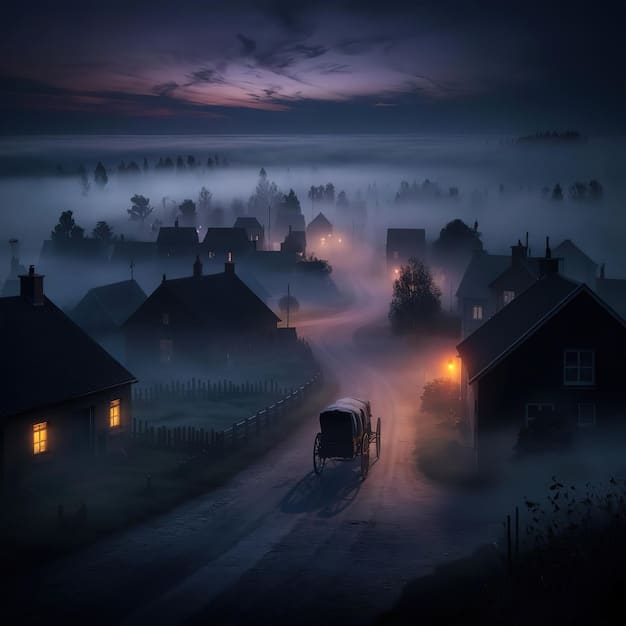
The Role of Color and Lighting in K-Drama Emotional Resonance
Color and lighting are not merely decorative elements in K-dramas; they are fundamental tools for emotional resonance and psychological storytelling. Directors and cinematographers meticulously select palettes and arrange light sources to evoke specific moods, underscore character development, and guide the audience’s perception of the narrative.
This deliberate approach ensures that the visual tone of a scene aligns perfectly with its emotional content. A character’s internal turmoil might be reflected in soft, shadowy lighting, while moments of joy or hope burst forth with vibrant, warm hues. This systematic use of visual language helps deepen the audience’s connection to the story and its characters.
Beyond Aesthetics: Strategic Use of Visuals
The strategic deployment of color and light often serves to reveal hidden meanings or foreshadow upcoming events. For instance, a sudden shift from bright, open spaces to confined, dimly lit rooms can signal a character’s increasing isolation or the onset of danger. These visual cues work on a subconscious level, enriching the viewing experience without overt exposition.
K-dramas frequently utilize unique color grading techniques to establish distinct visual signatures for different genres or thematic arcs. From the dreamy, pastel tones of a romantic comedy to the stark, gritty blues of a crime thriller, the color scheme instantly communicates the narrative’s core essence, allowing viewers to quickly immerse themselves in the intended atmosphere.
- Mood Setting: Colors and light directly influence emotional atmosphere.
- Character Reflection: Visuals mirroring internal states and growth.
- Foreshadowing: Subtle cues hinting at future plot developments.
- Genre Distinction: Unique color palettes defining series’ styles.
By understanding these subtle visual cues, viewers can gain a deeper appreciation for the meticulous planning and artistic vision that goes into every K-drama production. It highlights how integral these elements are to crafting a truly immersive and emotionally resonant story, making each frame a piece of a larger, elaborate puzzle.
Innovation and Future Trends in K-Drama Cinematography
K-drama cinematography continues to evolve, pushing boundaries and incorporating new technologies and artistic approaches. The industry’s commitment to innovation ensures that visual storytelling remains fresh, exciting, and capable of captivating global audiences. As technology advances, new possibilities emerge for visual expression, promising even more immersive and breathtaking experiences.
Filmmakers are experimenting with advanced camera techniques, drone usage for sweeping panoramas, and sophisticated post-production effects to create visually stunning worlds. This drive for innovation not only elevates the aesthetic quality but also enables more complex and nuanced narratives to be told through visual means, constantly redefining what’s possible in television production.
Embracing Technology and Artistic Experimentation
The trend towards more dynamic and immersive visuals is set to continue. Virtual production techniques, often seen in high-budget films, are slowly making their way into K-drama production, offering unparalleled flexibility in creating fantastical or historically accurate environments. This allows for breathtaking visuals that were once only achievable with extensive set designs or on-location shooting.
Furthermore, there’s a growing emphasis on more personalized and character-driven visual styles. Cinematographers are increasingly using subjective camera angles and unique visual filters to represent a character’s point of view or emotional state, fostering a deeper connection between the audience and the protagonists. This artistic experimentation ensures K-dramas remain at the forefront of visual excellence.
- Technological Integration: Embracing drones, virtual production, and advanced CGI.
- Immersive Environments: Crafting hyper-realistic or fantastical settings.
- Subjective Framing: Using visuals to convey character perspectives.
- Continuous Evolution: Constantly seeking new ways to tell stories visually.
The future of K-Drama cinematography: analyzing the visual storytelling techniques used in 3 award-winning series looks promising, with a ceaseless pursuit of visual perfection and narrative innovation. These advancements will undoubtedly continue to cement K-dramas’ status as global leaders in quality television production, setting new benchmarks for visual storytelling.
| Key Aspect | Brief Description |
|---|---|
| 🎨 Visual Contrast | Used to differentiate locations or emotional states, like in “Crash Landing on You.” |
| 📐 Striking Composition | Symmetry and framing highlight character traits and power dynamics, as seen in “Vincenzo.” |
| 🎥 Dynamic Camerawork | Engages viewers actively, especially in action-heavy scenes like “Kingdom.” |
| 💡 Symbolism via Lighting | Lighting choices convey mood, foreshadow events, and subtly develop story. |
Frequently Asked Questions About K-Drama Cinematography
K-Drama cinematography is characterized by its meticulous attention to visual detail, artistic composition, innovative use of color and lighting, and dynamic camerawork. These elements work in harmony to enhance emotional storytelling, character depth, and thematic resonance, often elevating the visual narrative to be as important as the script itself, creating a highly immersive experience for viewers globally.
Visual contrast is a powerful tool in K-dramas to highlight differences in environments, cultures, or character perspectives. In “Crash Landing on You,” for example, it starkly illustrated the varying atmospheres between North and South Korea, using muted tones for one and vibrant colors for the other. This technique helps emphasize emotional and social divides, guiding viewer interpretation of narrative themes.
In “Vincenzo,” composition, notably symmetrical framing and architectural elements, is crucial for emphasizing character traits and power dynamics. Vincenzo’s precise nature is often reflected in balanced shots, while framing can highlight his isolation or control. These careful visual arrangements contribute significantly to the series’ stylish aesthetic and its nuanced exploration of moral complexities, making every frame count.
“Kingdom” leverages dynamic camerawork, especially handheld shots during combat, to immerse viewers directly into the intense action and chaos of its zombie-infested world. This active camera technique amplifies the kinetic energy of battles and chases, building suspense and delivering a visceral sense of fear and urgency that is essential for a horror-fantasy historical drama, making the threat feel immediate.
Yes, K-dramas are increasingly embracing new technologies to enhance their cinematography. This includes advanced drone usage for breathtaking aerial shots, sophisticated post-production effects, and exploring virtual production techniques to create immersive or fantastical environments. This commitment to innovation allows for more complex visual narratives and helps maintain K-dramas’ reputation for high production value and cutting-edge visual storytelling.
Conclusion
The intricate artistry of K-Drama cinematography: analyzing the visual storytelling techniques used in 3 award-winning series reveals a profound dedication to visual narrative. From the striking contrasts in “Crash Landing on You” to the stylish compositions of “Vincenzo” and the dynamic action of “Kingdom,” K-dramas consistently demonstrate how visual elements can deeply enrich plot and character. This commitment to aesthetic excellence not only elevates the viewing experience but also cements their status as global leaders in television production, offering a masterclass in how images can speak volumes and resonate across cultures.

